(A) : Silicon is preferred to germanium while constructing zener diodes
(R): Thermal stability and current compatibility of silicon is high when compared to those of germanium.
Both 'A' and 'R' are true and 'R' is the correct explanation of 'A'
Both 'A' and 'R' are true and 'R' is not the correct explanation of 'A'
'A' is true and 'R' is false
'A' is false and 'R' is true
The correct Answer is:A
To solve the question regarding the preference of silicon over germanium in constructing zener diodes, we will analyze both the assertion (A) and the reason (R) provided.
Step 1: Understand the Assertion (A)
The assertion states: "Silicon is preferred to germanium while constructing zener diodes."
- Explanation: Silicon is indeed the preferred material for zener diodes due to its superior electrical properties, particularly in terms of breakdown voltage and stability.
Step 2: Understand the Reason (R)
The reason states: "Thermal stability and current compatibility of silicon is high when compared to those of germanium."
- Explanation: Silicon has better thermal stability than germanium. This means that silicon can operate at higher temperatures without degrading its performance. Additionally, silicon has a higher current carrying capacity, making it more reliable in various applications.
Step 3: Evaluate the Relationship Between A and R
Now we need to determine if the reason (R) correctly explains the assertion (A).
- Analysis: The reason provided supports the assertion since the thermal stability and current compatibility of silicon are indeed key factors that make it preferable over germanium for zener diodes.
Step 4: Conclusion
Both the assertion (A) and the reason (R) are true, and the reason correctly explains why silicon is preferred over germanium.
Final Answer
The correct answer is: Option A: Both A and R are true, and R is the correct explanation of A.
---
The assertion states: "Silicon is preferred to germanium while constructing zener diodes."
The reason states: "Thermal stability and current compatibility of silicon is high when compared to those of germanium."
Now we need to determine if the reason (R) correctly explains the assertion (A).
Both the assertion (A) and the reason (R) are true, and the reason correctly explains why silicon is preferred over germanium.
The correct answer is: Option A: Both A and R are true, and R is the correct explanation of A.
Topper's Solved these Questions
- BOOK - AAKASH SERIESCHAPTER - SEMICONDUCTOR DEVICESEXERCISE - EXERCISE -II (ENERGY BANDS AND CLASSIFICATION OF SOLIDS )3videos
SEMICONDUCTOR DEVICES
- BOOK - AAKASH SERIESCHAPTER - SEMICONDUCTOR DEVICESEXERCISE - EXERCISE -II (P-N JUNCTION DIODE)26videos
SEMICONDUCTOR DEVICES
- BOOK - AAKASH SERIESCHAPTER - SEMICONDUCTOR DEVICESEXERCISE - EXERCISE -I (MORE THAN ONE OPTION TYPE QUESTIONS)23videos
SEMICONDUCTOR DEVICES
- BOOK - AAKASH SERIESCHAPTER - RAY OPTICSEXERCISE - PROBLEMS ( LEVEL-II)60videos
RAY OPTICS
- BOOK - AAKASH SERIESCHAPTER - UNITS AND MEASUREMENTEXERCISE - PRACTICE EXERCISE45videos
UNITS AND MEASUREMENT
Similar Questions
Two junction diodes, one of germanium (Ge) and other of silicon (Si) are connected as shown in fig to a battery of 12V and a load resistance 10kΩ. The germanium diode conducts at 0.3V and silicon diode at 0.7V. When current flows in the circuit, the potential of terminal Y will be
 .View Solution
.View SolutionAssertion : The energy gap between the valence band and conduction band is greater in silicon than in germanium.
Reason : Thermal energy produces fewer minority carriers in silicon than in germanium.View Solution
Knowledge Check
- Question 1 - Select One
In the circuit shown in figure, the silicon and germanium diodes start conducting at 0.7 V and 0.3 V respectively. What are the values of V0 and I?
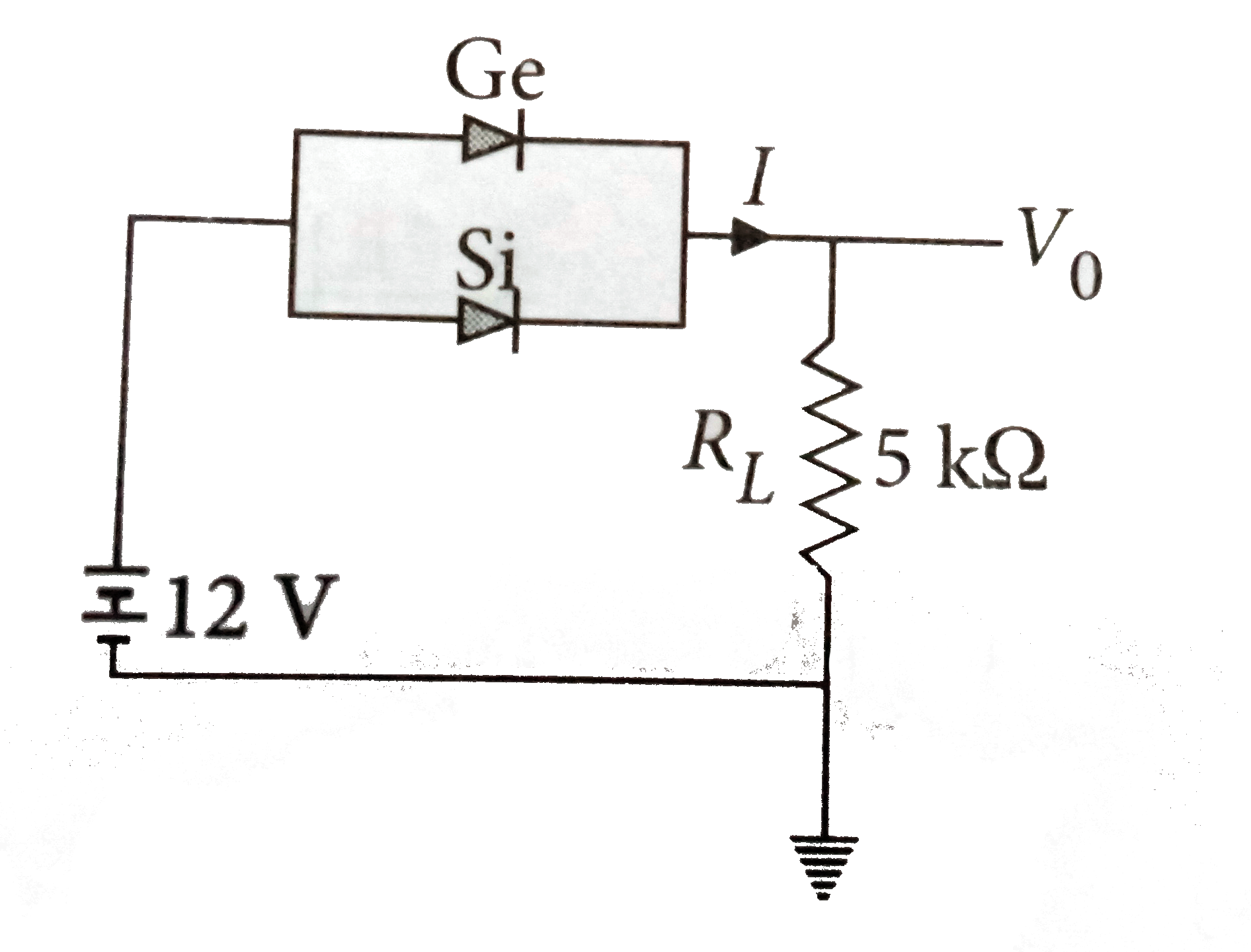 A12 V, 2.4 mAB11.7 V, 2.34 mAC11.3 V, 2.26 mAD11 V, 2.2 mA
A12 V, 2.4 mAB11.7 V, 2.34 mAC11.3 V, 2.26 mAD11 V, 2.2 mA
Statement-I : Germanium is preferred over silicon for making semiconductor devices
Statement-II : Energy gap for Ge is more than that of SIView SolutionCorrect statements among a to d regarding silicones are :
(a) They are polymers with hydrophobic character.
(b) They are biocompatible.
( c ) In general, they have high thermal stability and low dielectric strenght.
(d) Usually, they are resistant to oxidation and used as greases.View SolutionCorrect statements among a to d regarding silicones are :
(a) They are polymers with hydrophobic character.
(b) They are biocompatible.
( c ) In general, they have high thermal stability and low dielectric strenght.
(d) Usually, they are resistant to oxidation and used as greases.View SolutionConsider a box with three terminals on top of it as shown in figure.

Three components namely, two germanium diodes and one resistor are connected across these three terminals in some arrangement
A student performs an experiment in which any two of these three terminals are connected in the circuit shown in figure.
The student obtains graphs of current-voltage characteristics for unknown combination of components between the two terminals connected in the circuit. The graphs are
(i) When A is positive and B is negative
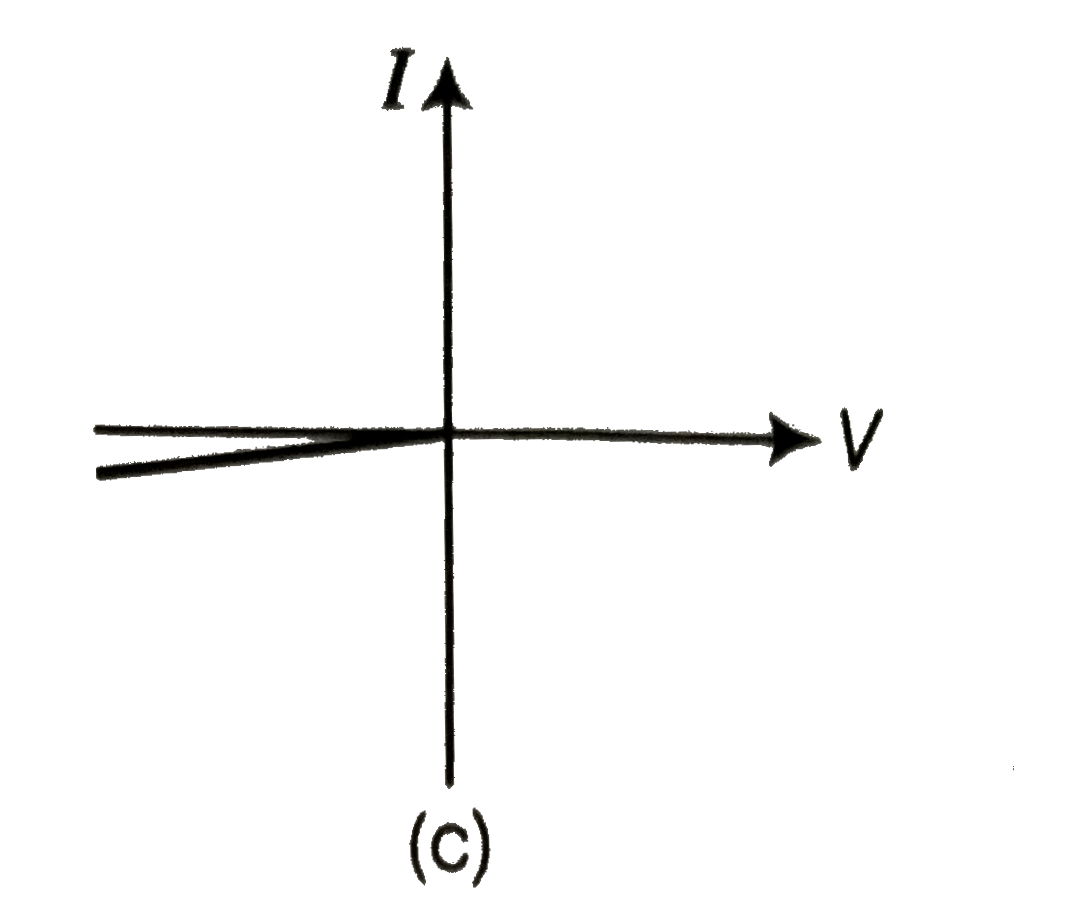
(ii) When A is negative and B is positive
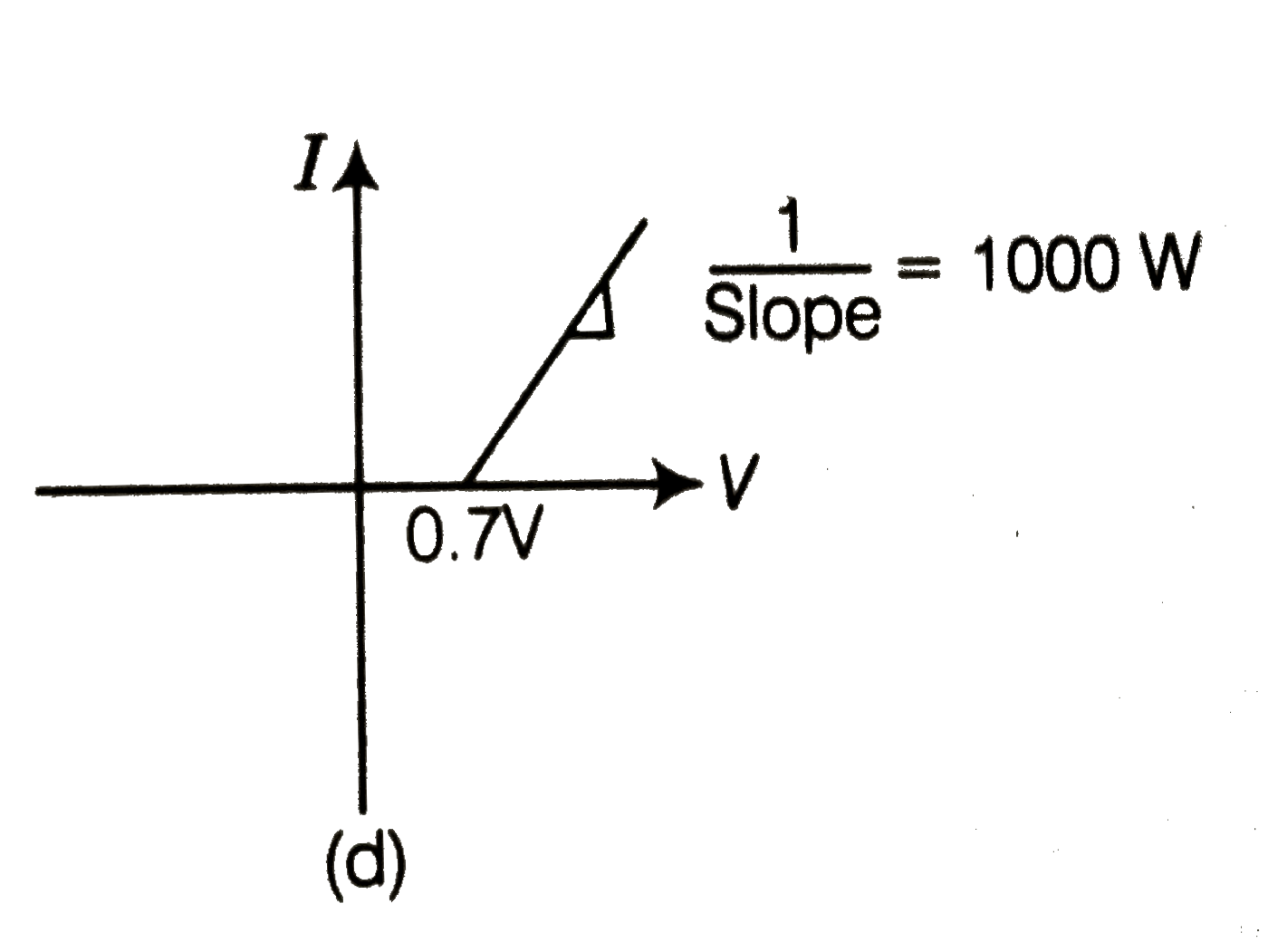
(iii) When B is negative and C is positve

(iv) When B is positive and C is neagtive
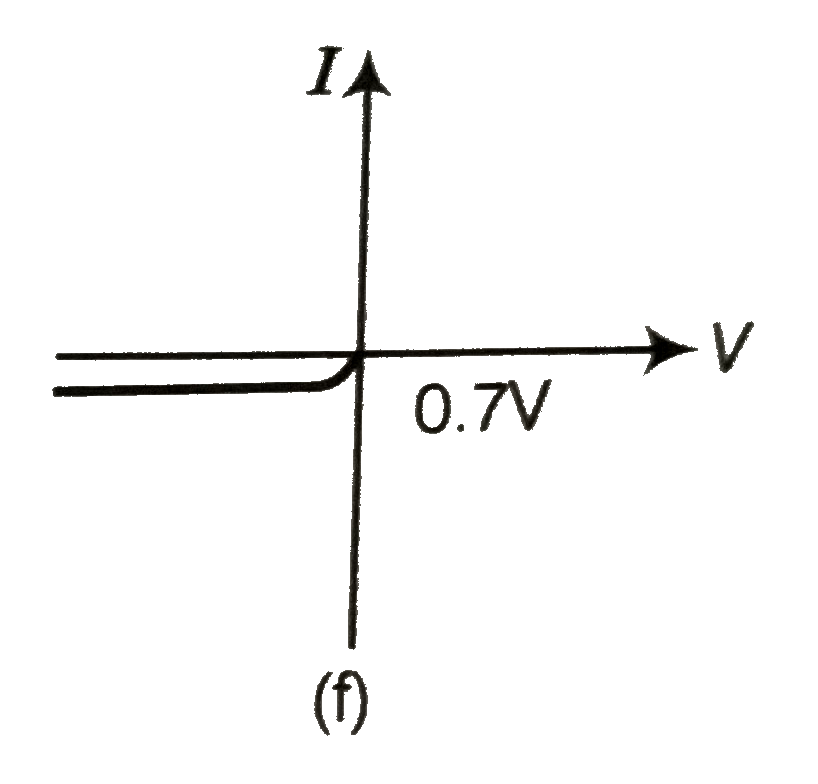
(v) When A is positive and C is negative
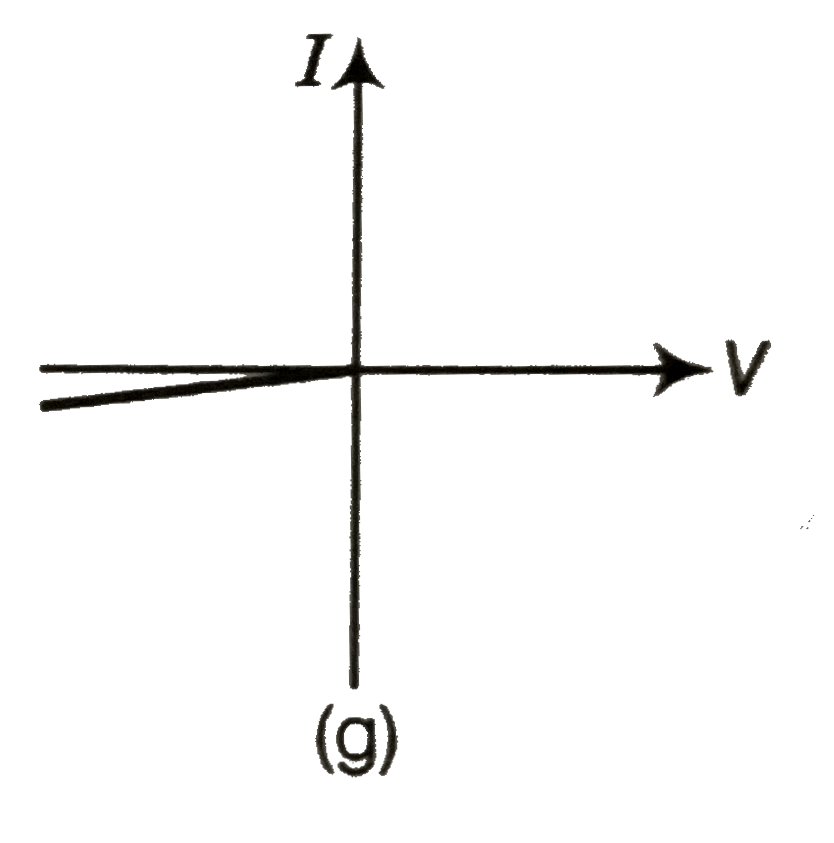
(vi) When A is negative and C is positive
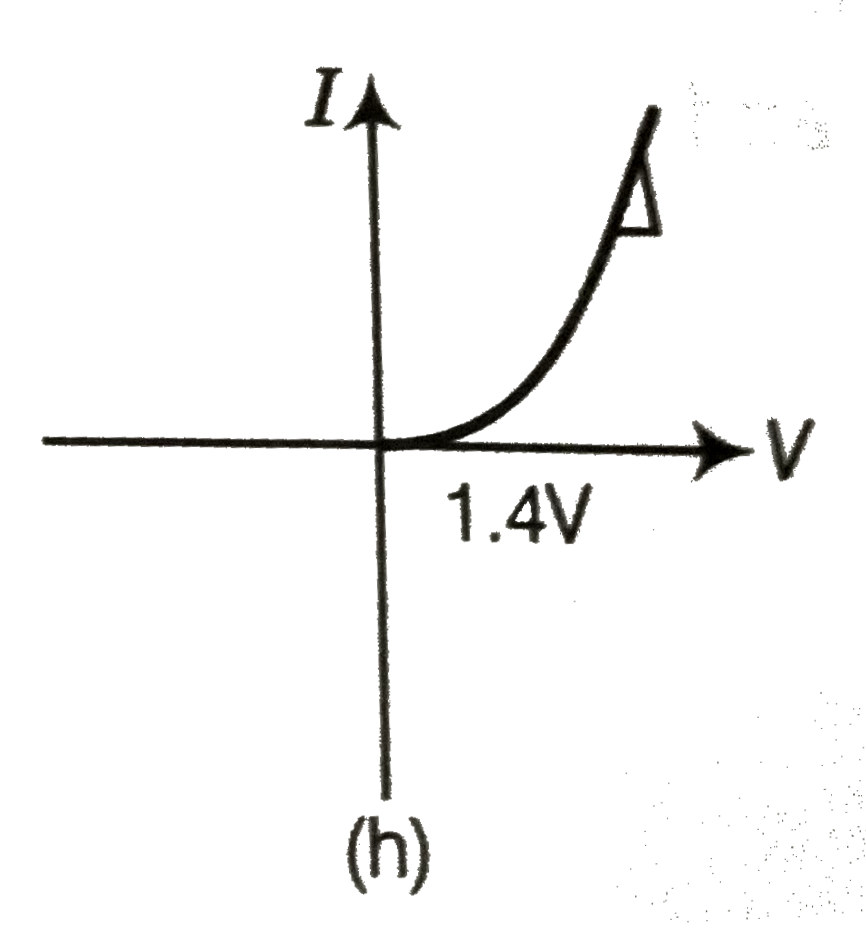
From these graphs of current − voltage characteristic shown in fig. (c) to (h) determine the arrangement of components between A, B and C.View SolutionThe conducting rod ab shown in figure makes contact with metal rails ca and db. The apparatus is in a uniform magnetic field 0.800T, perpendicular to the plane of the figure.
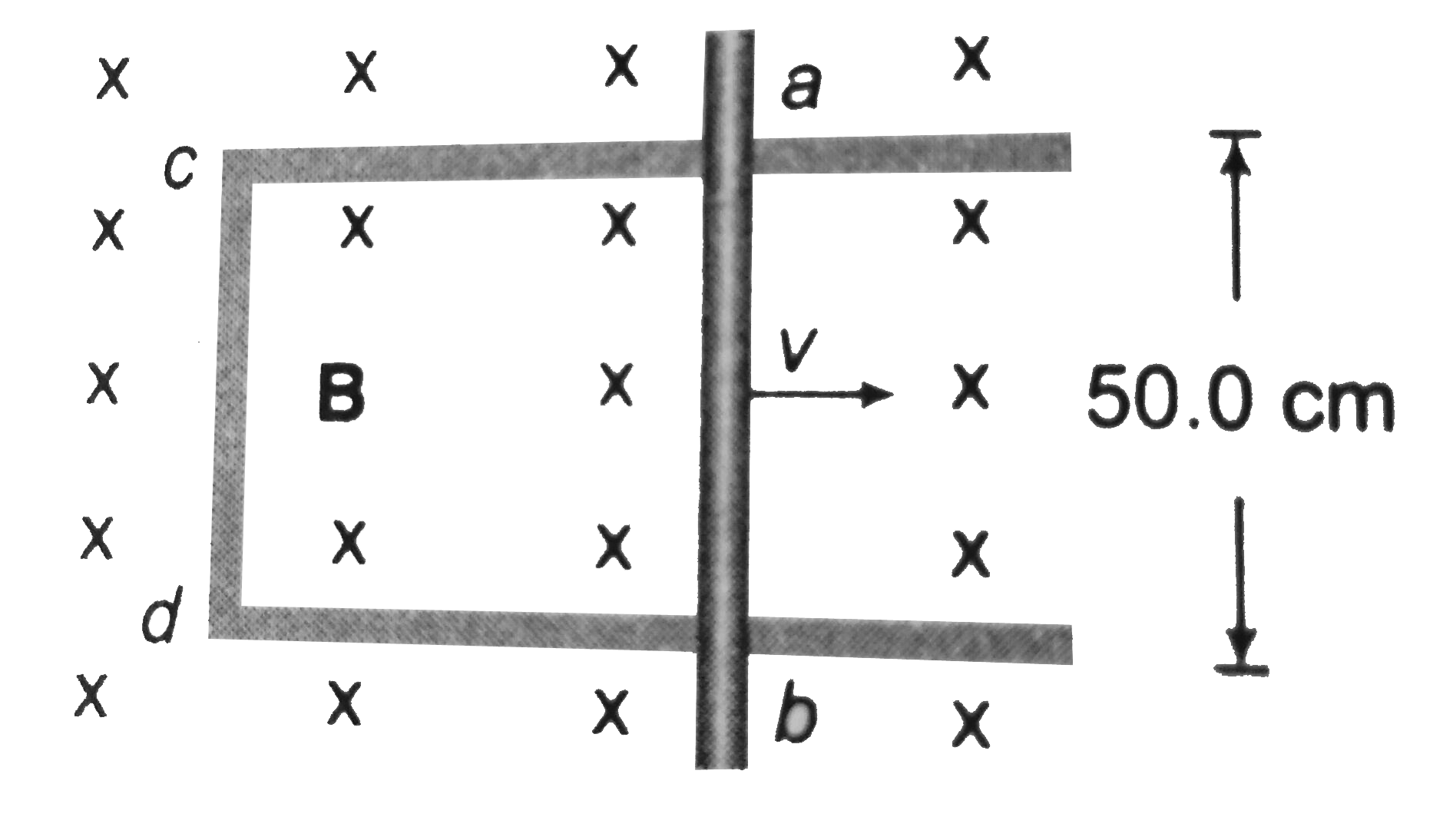
(a) Find the magnitude of the emf induced in the rod when it is moving toward the right with a speed 7.50m/s.
(b) In what direction does the current flow in the rod?
(c) If the resistance of the circuit abdc is 1.50Ω (assumed to be constant), find the force (magnitude and direction) required to keep the rod moving to the right with a constant speed of 7.50m/s. You can ignore friction.
(d) Compare the rate at which mechanical work is done by the force (Fu) with the rate at which thermal energy is developed in the circuit (I2R).View SolutionShow graphically how electric resistance of a piece of Silicon or Germanium varies when its temperature is varied.
View SolutionOnly those atoms which four covalent bonds produce a repetitive three dimesional structure using only covalent bonds., e.g. , diamond structure.The latter is based on a FCC lattice where lattice points are occupied by carbon atoms.Every atom in this structure is surrounded tetrahedrally by four others.Germanium, silicon and grey tin also crystallize in the same way as diamond. (Given :NA=6×1023sin54∘44'=0.8164)
If edge length of the cube is 3.60Å, then radius of carbon atom isView Solution

